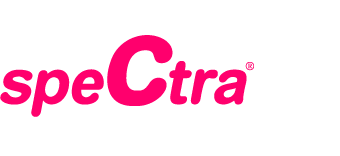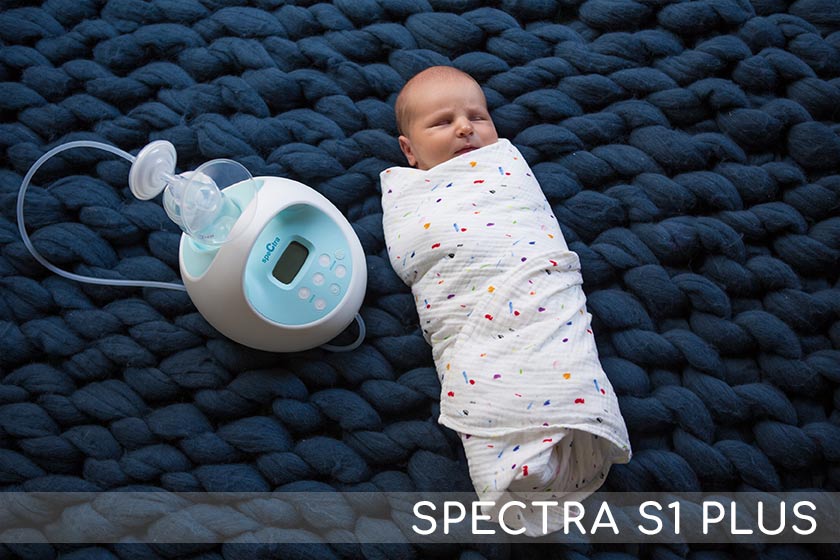Starting Solids
By Monica Auslander Moreno, MS, RDN
Essencenutritionmiami.com
@eatlikemonica
Food before the age of one provides supplemental nutrition to the majority of the infant’s intake — breastmilk and or formula. Most of the benefits of solids lie in developing motor, sensory, cognitive, and fine motor skills. Introducing the baby to the whole concept/atmosphere of solids is as, or more important, than the actual nutrients from the scant amount of food a six-month-old will eat. As time progresses, the ratio of solids to milk increases until age one, when the infant is ready to possibly wean off of breastmilk/formula and transition to cow’s milk (if no cow’s milk allergy is present.) Eating, for an infant, is about being with a caretaker, the sounds of the food being scraped about, watching the preparation of the food, or touching the food. They learn how to use utensils, use food as utensils (like a scooped zucchini stuffed with cottage cheese), and are noticing colors, shapes, textures, temperatures, seasonings, flavors, and scents. The food experience makes babies more aware of their surroundings like their chair, their clothes, and the adult reactions to their intake. They learn to drink water/milk from a cup sorting out taste preferences, and observe animals enjoy the fallen bits.
We recommend that babies meet three milestones before introducing solids:
1) That they can sit independently, and well, for several minutes at a time. This is great to minimize choking risk because if they aren’t focusing on staying upright, they’re less likely to choke.
2) That they lose their tongue thrust reflux.
3) That they show an interest in the food that adults around them are eating.
There is much debate about starting with purees versus “whole foods” (known as Baby-Led Weaning, or BLW). There are risks and benefits to both methods. Baby-led weaning may present a higher choking risk and can take longer but may advance eaters to “adult food” more quickly and may lead to more “intuitive” eating, as babies can probably better intuit their own fullness and satiety this way. They likely develop enhanced jaw strengthening with BLW, since it takes quite a lot of force to chew whole foods, even without teeth, although it’s prudent to remember that even babies fed with purees (you likely were!) rarely become kindergarteners who can’t chew. BLW is definitely messier! Spoon-feeding an infant tends to be cleaner, and you can control the amount on the spoon. However, an infant may zone out and overeat / ignore fullness cues. Purees can be time-consuming to prepare if you’re making them at home, and store-bought puree packets tend to have more sugar and be more fruit-based than we like (though there are now a few brands producing protein and veggie blends with very little sugar.) Both BLW and purees require significant precautions against choking and honoring safety protocols. All foods, even “safe” ones, need to be appropriately mashed/cooked/watered down to match your infant’s abilities. Never leave an infant unattended while eating. Always ensure they are sitting upright. Familiarize yourself with CPR and infant choking treatment techniques. Be aware that babies gag and recover when they eat — this is different from choking, where they cannot move air at all. Babies should be coached to chew and swallow at all times as caretakers mimic these actions themselves
Six-month-old infants should be taking at least 24 oz of milk per day. This drops to 20 oz per day at nine months and 16 oz per day at one year. It’s also a good idea to offer water at meals to familiarize your infant. In the realm of food behavior, maintaining a happy and joyous but neutral attitude towards food is best. Feed your baby when they are alert and happy, and not too hungry, and not too full. You can start with one “meal” a day (it may only be a teaspoon or two!) and progress to eventually three meals per day by nine to 11 months. Your baby will start to increase their portion sizes/demand for solids as time goes on, but be aware that sometimes it can even take weeks for a baby to figure out what to do in the highchair with food presented to him!
Nutritionally, the infant’s iron stores from pregnancy start to decrease around six months. Focusing on iron-rich foods is priority #1 with respect to the “nutrition” aspect of solids. Heme iron, that which comes from animals, is better absorbed than non-heme iron. (heme iron: beef, venison, bison, lamb, chicken, turkey, eggs. Non-heme iron: ground flax, chia, walnuts, fortified whole grains, hempseed, spinach, almonds, tofu — ensure appropriate consistency versus choking!) Both plants and animals should be introduced with solids. Always give iron-rich foods with a food rich in Vitamin C (a vegetable/fruit) to enhance absorption, and try to avoid giving iron-rich foods with calcium (a dairy product), as they inhibit each other’s absorption. Omega3 fatty acids are also a major macronutrient important to infant development. Offer wild, small, fatty fish (lower in mercury) like sardines, anchovies (bones removed, skin removed), salmon, mackerel, and herring. Eggs, which are rich in choline, are also a wonderful thing to introduce to babies (boiled and cut into appropriate slices, or pureed with breastmilk/water). By the way — you can always puree foods with breastmilk/formula/water!
Some ideas for first solid meals, whether you are practicing BLW or puree (remember appropriate chewing/choking/cooking precautions for appropriate texture!):
Steak + avocado + sweet potato
Beet + salmon + spinach
Raspberries + Green beans + chicken mashed with Greek yogurt
Carrot + squash + cottage cheese
Zucchini + kefir + chickpeas
Oat flour + seed butter + banana
If your child is at risk for food allergies, you should consider offering high-risk allergy foods in the presence of your pediatrician and consulting an immunologist for testing before starting solids.
An infant is considered high risk if they have a family history of food allergies, a documented allergy, and or have eczema. Early exposure to antibiotics may also raise the risk of food allergy. The American Academy of Pediatrics changed its position in 2008 about introducing high-risk allergenic foods because there was a lack of evidence that delaying the introduction of allergenic foods could prevent food allergies.
Over time, your baby will move from one little snack per day to three “square” meals, and then eventually auxiliary snacks. Babies should continue to include high-quality, full-fat dairy (like cow/goat/sheep milk [after the age of 1], yogurt, kefir, cottage cheese, and cheese) throughout their day after weaning from breastmilk/formula. All meals/snacks should include protein and plants (fruit/vegetables/legumes, etc.). Over time, you’ll raise a competent and confident eater (just like you!)
For more tips nutritional tips for you and your baby follow Monica at @eatlikemonica on IG
Note from a Spectra Baby USA, IBCLC:
Breastfeeding at this stage can look different for every mom. Are you pumping and nursing? Are you exclusively pumping? These factors can influence how often you should be pumping at this stage. You never ever want to stop pumping cold turkey. Some moms will be able to pump enough with only 4 pumping sessions per day while others will need to continue to pump 6-8 times per day. It all depends on your breastfeeding routine and how much milk you would like to have on reserve. Remember baby’s primary nutrition should still be breast milk so it’s important to continue to pump when baby receives a bottle whether you’re exclusively pumping or pumping when you are away from your baby. Continue to incorporate pumping sessions to keep providing enough breast milk to meet your baby’s nutritional needs. Our bodies are pretty amazing and will adjust easily to any new routine!
The information provided here is for general informational purposes only, and is not intended to be a substitute for professional medical advice, diagnosis, or treatment by a qualified medical professional. Any questions you may have concerning the diagnosis or treatment of a medical condition should be directed to your doctor or other qualified healthcare providers.
The copyright and other intellectual property rights in all material and content here, including the organization and layout of the site, is owned by Essence Nutrition, LLC and/or its licensors. Any reproduction of content or layout without explicit permission from Essence Nutrition, LLC is forbidden. Any rights not expressly granted in these terms are reserved.



